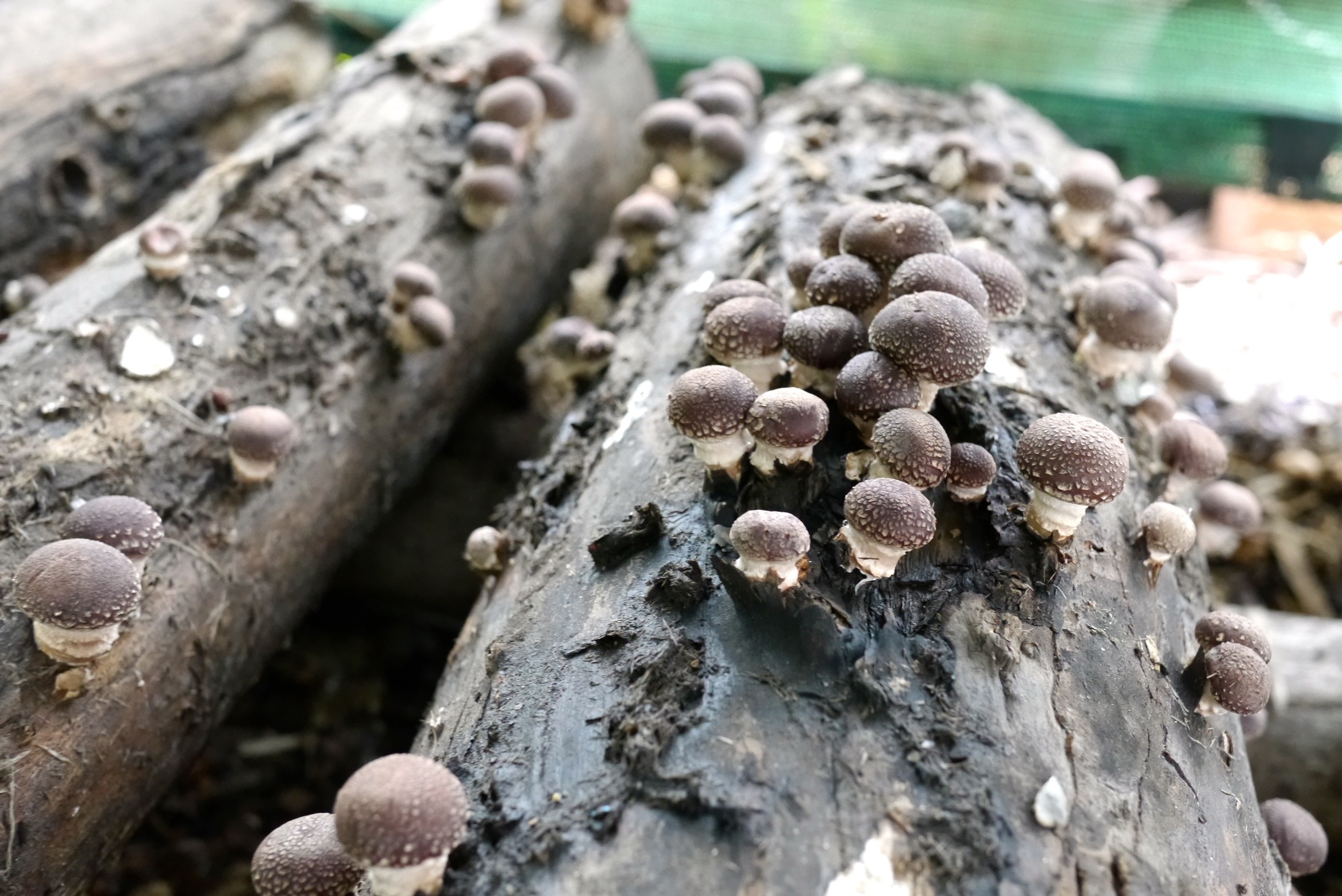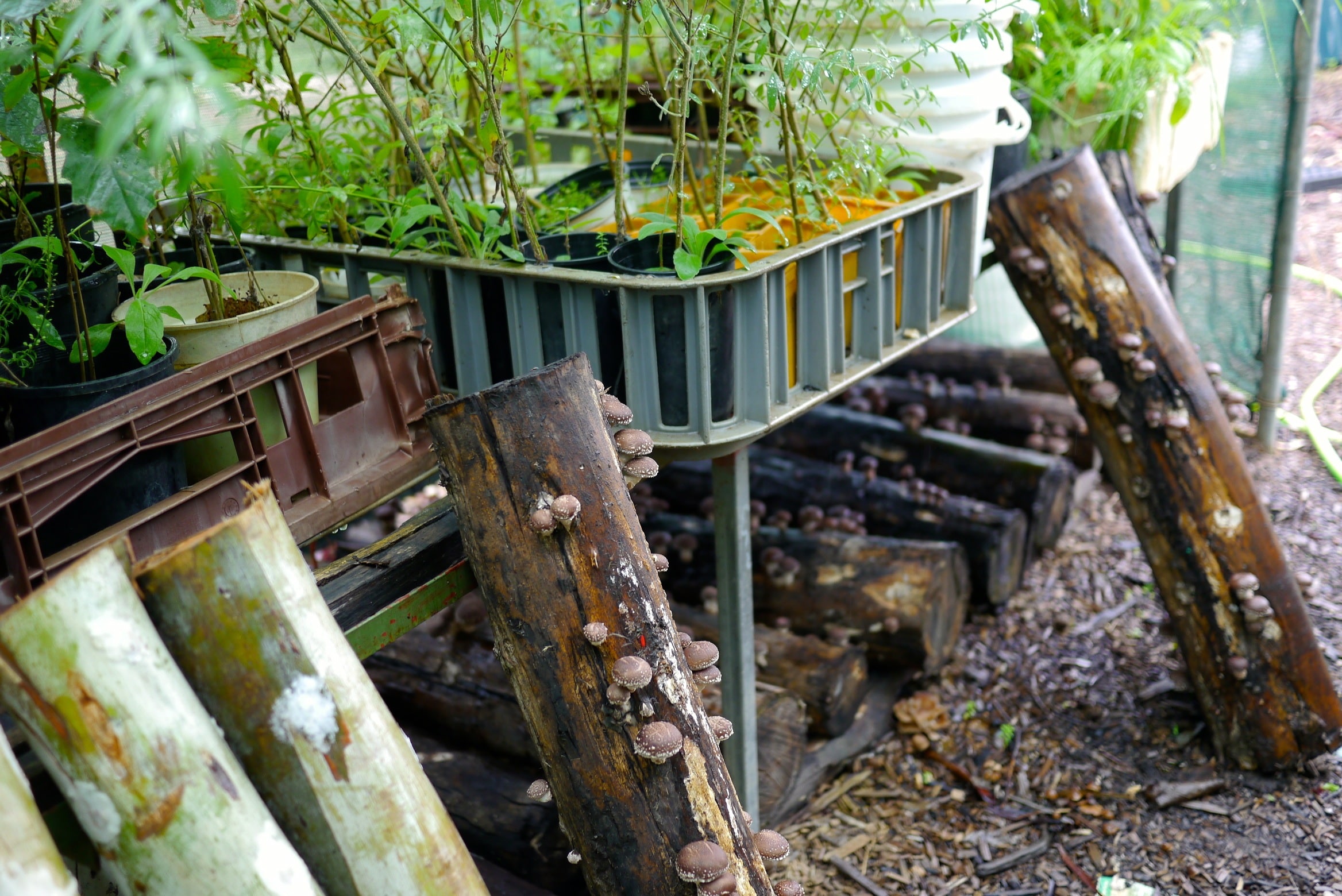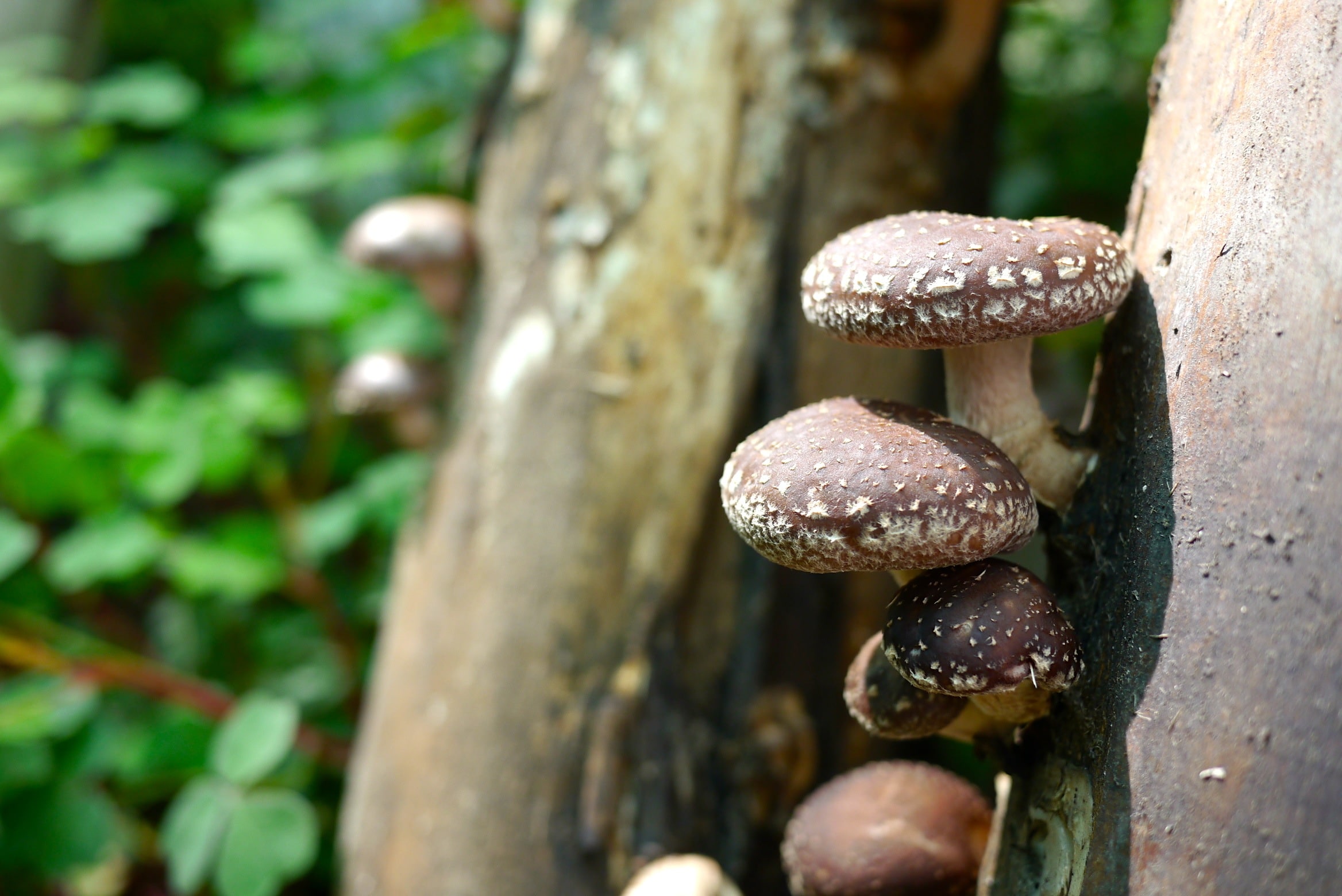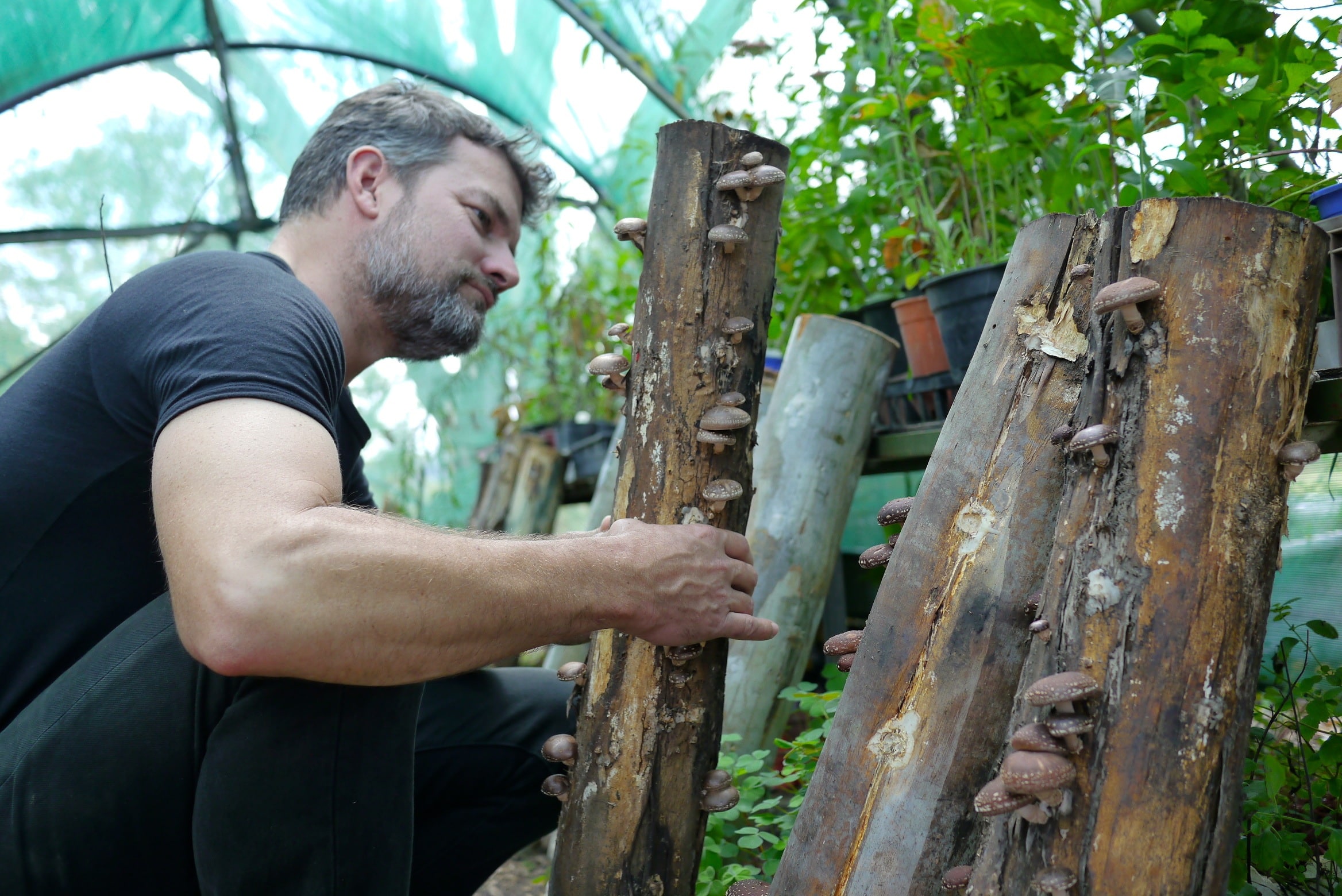
Growing shiitakes on logs is a great idea for any backyard or small farm food system. Partly because after the burst of work needed at the start, you don’t need to think about them for a fair while, until they’re ready.
Then there’s the main reason that shiitake logs are a great idea. Because eventually, one rainy day, you get shiitakes. Oh so good…
We keep our shiitake logs in our shade house, where we propogate our perennial seedlings and cuttings. This is the only part of our farm that gets misted with water on a daily basis – a necessary thing, in a dry climate like ours.
Henceforth, underneath the benches holding pots containing everything from young oaks to arrowroot, is primo shiitake log territory:
- great airflow
- shady
- regularly humidified via the daily misting of the plants above
We inoculated these logs with shiitake plug and sawdust spawn and sealed the holes with beeswax about 9 months ago.
Traditionally, oak, willow and poplar logs are used, but around here the logwood that we have in excessive supply are eucalypts. So, work with what you’ve got.
These logs were sited horizontally, raised off the ground. They’re off the ground as we only want the shiitake fungi to colonise the logs, not all the other fungi around and about.
Then, the logs sat there, and were mostly forgotten. Through winter, spring, and summer too.
A few weeks back, it was clear that a bit of Autumn rain was on it’s way. So we dunked the logs for 24 hours in a bathtub of water to stimulate fruiting, and then put them back where they were.
And now, after many months, it’s time to get our shiitake on…
Over two days we harvested about 4 kg of organic shiitakes – enough for a small-family-sized ‘week of shiitake’, plus some to dry for winter and beyond.
To harvest log shiitakes, twist them off from the base.
These logs should ‘flush’ again, in time, with a smaller, second fruiting – we might even get a third. We’ll check them after the next rains.
Meanwhile, there’s more recently inoculated logs in the shadehouse, slowly being colonised by the silently wonderful shiitake mycelium.
A passive harvest of incredible goodness, slumbering beneath the seedling’s benches. Occasionally bursting forth to make us grin from ear to ear, and to make us plan the next series of shiitake-inspired dinners.
Of course, you don’t need a shadehouse to grow these – if you have a shady spot out the back or down the side, you’re off and rolling. Keep the logs shaded with good airflow, and mist them with water multiple times a week.
As said, after the first burst of activity when inoculating the logs, this is ‘set and forget’ food growing until harvest time.
An excellent addition to any growing system, because where food is growing there’s usually somewhere you can incorporate the needs of a few (or more) shiitake logs.
And the pay-off is such a good one. Home grown shiitakes for dinner? Yes please.
Making shiitake logs is one of the many indoor and outdoor cultivation techniques covered in our awesome 2-day Gourmet Mushroom Cultivation courses, which happen in Sydney every 3 months.






































Wow! My daughter would be in heaven… I saw at the Urban Agricultural fair this year logs for sale. We hesitated, but I’m thinking we might try next year. Do you dehydrate them?
Awesome. It’s not often you read about this sort of thing. Mushrooms are reduced to the foragers realm.
Loved your article about shiitakes in Pip Magazine too.
Where do we buy the sawdust and seedlings to get started ?